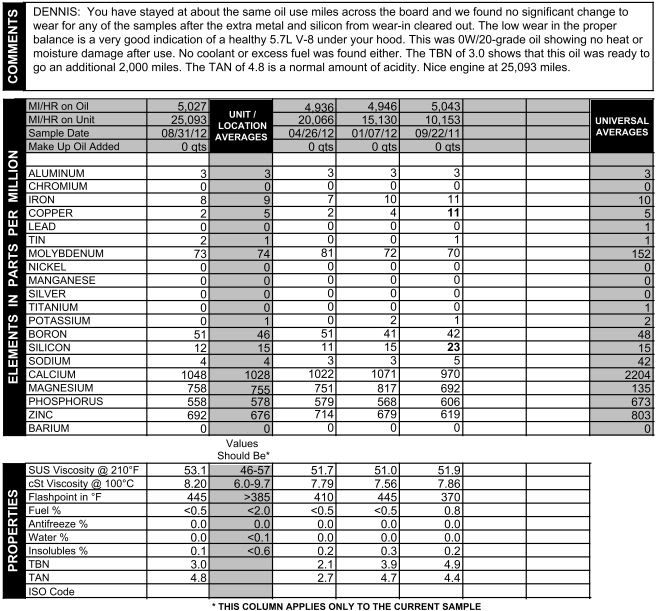Here is the latest UOA on my 2011 Tundra with 5.7L engine. Looks pretty stable. TBN a little better this time, probably because the usage period covered warm weather (I am speculating that warm weather usage = less condensation, fewer acids to neutralize).
This is the last UOA using Mobil 1 0W-20. I have installed Amsoil signature series 0W-20. I will have a UOA performed at 5,000 miles to compare to the previous four UOAs using Mobil 1.
Also, I just had a VOA performed by Blackstone on the Amsoil Signature series 0W-20, since I am using it now and wanted a baseline VOA from the same lab for comparison. This is being posted in the VOA section.

This is the last UOA using Mobil 1 0W-20. I have installed Amsoil signature series 0W-20. I will have a UOA performed at 5,000 miles to compare to the previous four UOAs using Mobil 1.
Also, I just had a VOA performed by Blackstone on the Amsoil Signature series 0W-20, since I am using it now and wanted a baseline VOA from the same lab for comparison. This is being posted in the VOA section.

Last edited by a moderator:

